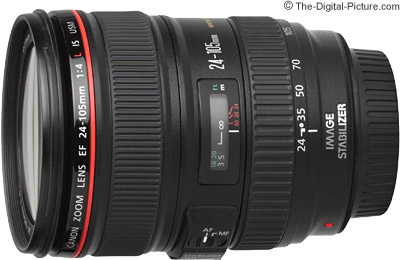Articles

Women Photographing WomenWhen photographer Lynsey Addario...
Reportage by Getty Images Tumblr
Personal trainer in Saudi Arabia. Photo by Lynsey Addario for National Geographic.

Girl in Israeli settlement. Photo by Gillian Laub/Getty Images Reportage

Midwife in Mali. Photo by Veronique de Viguerie/Getty Images Reportage

Self-immolation
Women Photographing Women
When photographer Lynsey Addario received an assignment to document the lives of women in Saudi Arabia, she felt a brief moment of dread at working in what can be an impenetrable place for a foreign journalist.
“It’s such a private society,” says Addario, “So it takes a very long time for people to allow you to go indoors and photograph.” One imagines a male photojournalist, working in a country where women are required to be veiled in public and around unrelated men, would find Saudi life even more inscrutable. Afforded the unique access of a female photographer, Addario was able to provide a more candid representation of women’s lives there than typically seen in the West, such as in the photo of Halah Alhamrani, who teaches kickboxing at her home in Jeddah. Saudi clerics have long discouraged women from sports, but urban women are flocking to clubs and home gyms like Alhamrani’s, where they can exercise away from men. Despite the challenges of photographing in this circumscribed environment, Addario says, “I find myself there and having fun and meeting these incredible women.”
If not to the same degree as Saudi sports, the profession of photojournalism has also historically been dominated by men. When the National Geographic photographer Lynn Johnson received her first war assignment 20 years ago in Sarajevo, a European colleague told her, “Women have no business covering war.”
These days, there is a growing number of women working in all areas of photojournalism, including conflict. This inclusiveness - hard-won by pioneering women - has dramatically broadened the kinds of stories we see and how those stories are covered. This singularity of perspective and access is evident in the work of Getty Images Reportage photographers like Addario, Veronique de Viguerie, Gillian Laub and Paula Bronstein.
Bronstein’s portrait of a woman named Mariam, a patient in a hospital burn unit in Afghanistan, shows the kind of intimate access a female journalist can achieve that may be off-limits to male photographers. Bronstein met Mariam while the Afghan woman was recovering from a suicide attempt, when she self-immolated with household fuel to act out against a violent and abusive marriage. Bronstein’s photos show Mariam lifting her sweater to reveal large scars across her pregnant belly. More startling was learning that Mariam had planned to move back in with her husband. Having earned the woman’s trust, Bronstein was allowed to visit Mariam’s home to photograph her two-year-old daughter and the husband whose alleged abuse had caused Mariam to set herself on fire.
Veronique de Viguerie, a Reportage photographer who has also worked extensively in Afghanistan, says that as a foreigner and a woman, “You’re kind of a third sex. You’re not really a man, but not really a woman. It’s kind of convenient.”
The unique vantage point of the female photographer isn’t always a mere matter of access; women are often more attuned to the experiences of women in the countries they’re covering. In the last decade, northern Mali has been a hotbed of arms and drug trafficking, the epicenter of the Tuareg rebellion against Mali’s government, and sanctuary of the terrorist group Al-Qaeda in the Islamic Maghreb. De Viguerie has covered many aspects of these issues, but some of her most affecting work came from a less sensational story on the retraining of traditional midwives who serve the region’s nomadic communities. Among the initiative’s achievements is an uptick in the referrals of difficult cases to local medical centers, something that is far from natural for Tuareg women, who, out of modesty, normally deliver their babies out of sight, hidden behind a tree or under a tent.
In her photos, de Viguerie provides a look beneath the tent and at the work of midwives who provide a vital link between health organizations and nomadic communities. Retrained traditional midwives now attend to more than half the births in northern Mali, helping to reduce one of the world’s highest infant and maternal mortality rates.
Every conflict in modern history has affected - or been affected by - women and girls, and yet so much of the coverage of these events has focused on the acts of men. The infusion of female journalists in recent decades has no doubt helped draw attention to how these conflicts affect women, either directly or indirectly.
Gillian Laub saw the consequences of a conflict on the lives of young girls when she visited Kfar Tapuach, an Israeli settlement in the West Bank that the international community regards as illegal. In Tapuach, Laub met a group of teenage girls who are the face of the area’s religious settler movement.
“Instead of after-school sports, they did after-school fight-the-state,” observed the writer Elizabeth Rubin, who wrote an accompanying story for Tablet magazine. Laub’s frank portraits show the intensity of the girls’ rebellious spirit.
“Photographing the teenage settler girls was complicated,” says Laub. “They were all religious and skeptical of anyone not from their community, so I think being female and married definitely helped them feel more comfortable.”
At its heart, good photojournalism is the art of making a subject feel comfortable, inviting them to reveal a part of themselves otherwise hidden. The growing ranks of female photographers have shed light on a range of human experience that has often been minimized in the historical record.
“We have access to women on a different level than men have, just as male photographers have a different relationship with the men they’re covering,” writes Lynsey Addario. “I’ve always found it a great advantage, being a woman.”
Credits (clockwise from top): Lynsey Addario/Getty Images Reportage for National Geographic; Veronique de Viguerie/Getty Images Reportage; Paula Bronstein/Getty Images; Gillian Laub/Getty Images Reportage.















